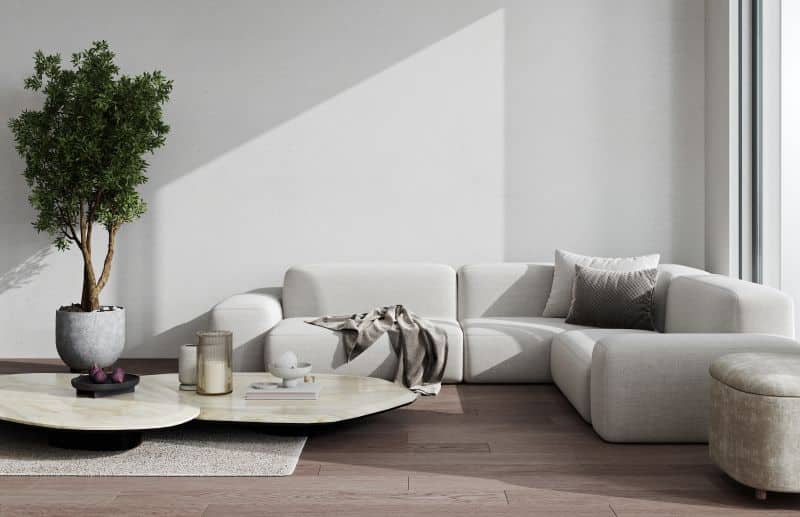Key Takeaways
- Creative design strategies allow small living rooms to feel open, functional, and stylish.
- Choosing the right living room furniture, utilizing clever storage solutions, and incorporating light color palettes are essential for maximizing space and comfort.
- Blending practical tips with real-life inspiration empowers anyone to enhance their space, regardless of the square footage.
Making the Most of Small Spaces
Living in a compact home or apartment requires creativity, but it certainly doesn’t mean you have to compromise on comfort or aesthetics. Small living rooms benefit most from a vision that prioritizes balance, flow, and versatility. Even in a limited footprint, you can use design principles drawn from interior experts to transform the feel of your space. For example, the selection of living room furniture is instrumental—look for pieces that are designed to fit smaller rooms and can serve multiple functions. Rather than cramming in large, heavy furniture, opt for streamlined and adaptable shapes that allow for seamless movement and interaction.
Embracing the limitations of a small space invites a thoughtful approach: evaluate what you use the room for, whether it’s relaxing after work, hosting a movie night, or creating a spot for hobbies. When every item in the room serves a purpose, the result is an environment that looks intentional rather than cluttered. This mindset enables you to see your compact living room as a blank canvas full of potential, ready to be transformed by resourceful choices and clever arrangement.
Choosing Furniture That Fits
Oversized sectionals and large furnishings can dominate small living areas, highlighting the necessity for appropriately scaled items. Choose sleek-arm sofas, loveseats, armless chairs, and designs with slender legs that allow for light and air circulation. Small tables, nesting stools, and tiered shelving offer versatility for different activities. When purchasing, think about how each piece complements those already present in the room—considering both style and size. Careful planning is crucial—measure the area and maintain clear pathways.
According to The New York Times, designers advocate for customization whenever feasible, utilizing built-ins or modular sofas to optimize space without feeling cramped. A few intentional pieces—such as a bench that doubles as a media stand or a convertible coffee table—contribute to visual tranquility and functional comfort. Combining different textures and materials adds interest to the room while maintaining order and cohesion.
Creating Visual Space With Color and Light
Never underestimate the power of color. Light shades, pastels, and neutrals reflect natural light, making walls seem to recede and enlarging small spaces. For a stronger effect, paint your ceiling a lighter color than your walls. Using furniture and decor in similar tones fosters a sense of flow, softening corners and minimizing visual clutter. Embrace personality: a stylish rug or striking gallery wall draws attention and gives the space a unique character. Mirrors, glass furniture, and metallic accents enhance light and create an illusion of spaciousness. Position a large mirror across from your main window or behind a lamp to redirect daylight throughout the room. Opt for light, breezy curtain materials that can be drawn back completely to maximize window exposure without adding weight. If you have limited natural light, layer your lighting with sconces, floor lamps, and task lights to cultivate a warm atmosphere both day and night.
Storage Smart Solutions
Selecting a functional small living room with efficient storage is efficient. Wall-mounted shelves, ceiling-high feeling heavy-ins, and tall bookshelves utilize vertical space, allowing for essential seating and tables to be placed below. Use decorative baskets and ottomans with hidden compartments to organize everyday clutter, such as remotes, books, and board games, without requiring extra space.
Any unused niche can become storage: place a slim console behind the sofa for lamps and artwork, or use bins under tables for craft supplies. Regularly edit and declutter to keep only what you truly need visible. Multi-use pieces, such as sleeper sofas, convertible coffee tables, and benches with lift-up seats, help keep things organized and accessible when guests visit.
- Install built-in shelving around windows and doors.
- Add pull-out baskets or storage cubes under seating. Choose tables and benches with drawers or compartments. Ideal storage keeps your living room adaptable for daily life and entertaining while providing a visually calm backdrop.
Multifunctional Furniture Magic
In small living rooms, furniture must be adaptable to various scenarios, including lounging, working, dining, and hosting. Sofa beds, futons, and chairs with side tables offer versatility, making it easy to transition from daily use to entertaining. Drop-leaf or nesting tables can function as both workspace and coffee spot, ideal for modern lifestyles. Items with mobility, like bar carts or wheeled ottomans, allow for flexibility and create more floor space for play or exercise. Decorative ladders for towels or magazines provide vertical storage, while wall-mounted desks and fold-down tables deliver home office functionality without consuming living space.
Playing With Layouts
Achieving a harmonious small living room requires thoughtful arrangement rather than just suitable furnishings. Instead of placing sofas against walls, opt for floating seating to foster conversation. L-shaped arrangements optimize space while avoiding the blocking of windows and doors, thereby keeping the area, such as the living room, open. Ensure clear traffic flow between key areas, and consider floor spacing to enhance character and accessibility. Utilize scale drawings or online plan layouts, as small adjustments can significantly improve movement, providing light and openness.
Bringing Inspiring Life
Real-life examples can inspire change in small living spaces, as shown by ideas from Architectural Digest’s gallery. Urban renters and tiny house residents demonstrate that clever design can make small areas functional and stylish. Suggestions for improvement include making small adjustments, like changing a rug or repositioning furniture, and taking photos to monitor changes. Embracing gradual steps, seeking design inspiration from various sources, and celebrating personal style can enhance even the tiniest living rooms.

